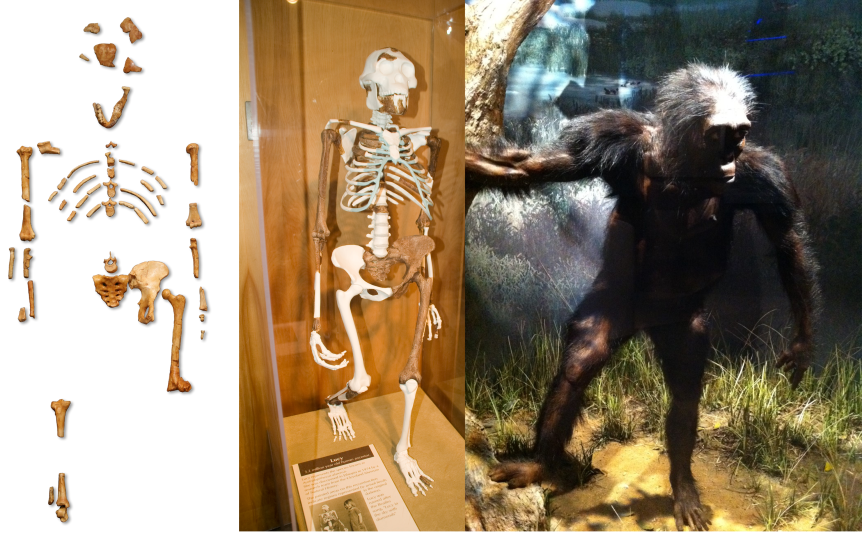
As Google reminded us, today is the 41st anniversary of the finding of Lucy, the first discovered member of the species Australopithecus afarensis. Lucy lived in Ethiopia about 3.2 million years ago and the most extraordinary fact about her is that her fossil represents the first evidence of bipedalism in a hominin (we are also hominins).
Lucy is one “missing link” (not ‘missing’ anymore, obviously) between the common ancestor of humans and chimpanzees and humans because she has ape-like features (jaw, forehead, long arms, small cranium) and human-like features (knee, ankle, lumbar curve, pelvic bones) and walked upright.
Meyer et al. (2015) wanted to do a comprehensive reconstruction of Lucy for display at the American Museum of Natural History in New York. During this work they noticed that one vertebrae of the total of nine found is kindda small compared to the other ones. So they set to measure vertebrae form all sorts of other species, alive and extinct, and after some factor analysis they concluded that out of Lucy’s nine found vertebrae, the little one is not actually hers, but belongs to a different species from the genus Theropithecus (a baboon ancestor).
This finding is functionally uninformative and their “work does not refute previous work on Lucy or its importance for human evolution, but rather highlights the importance of studying original fossils, as well as the efficacy of the scientific method.” In other words, give the poor anthropologists not reconstructions but the original fossils to work with (most people worked with Lucy’s reconstructions which missed some details, thus allowing this pesky vertebra to remain miss-cataloged for 40 years).

This is the first paper of pure anthropology that I have read in full and let me tell you that I found a lot of curious things, unrelated to Lucy. Like, for example, from an anthropologist’s point of view, an adult is someone with the third molar completely erupted. We should then look into the people’s mouths before giving them the keys to the wine cellar, because some 21-year olds are definitely not adults. Also, instead of a medical doctor, get an anthropologist to teach anatomy, because oh boy do these people know their skeletons! Here is an excerpt from the Methods section: “The overall size of the A.L. 288-1am partial vertebra was calculated as the geometric mean of six linear dimensions: lamina superoinferior height and dorsoventral thickness, pars interarticularis width, interarticular facet height, and superior and inferior articular interfacet maximum transverse widths. The pars interarticularis geometric mean includes three variables from the pars interarticularis: lamina superoinferior height and dorsoventral thickness, and pars interarticularis width” (p. 175).
All in all, nice!
Reference: Meyer MR, Williams SA, Smith MP, Sawyer GJ (August 2015, Epub 6 Jun 2015). Lucy’s back: Reassessment of fossils associated with the A.L. 288-1 vertebral column. Journal of Human Evolution, 85:174-80. doi: 10.1016/j.jhevol.2015.05.007. Article | FREE FULLTEXT PDF
By Neuronicus, 24 November 2015

